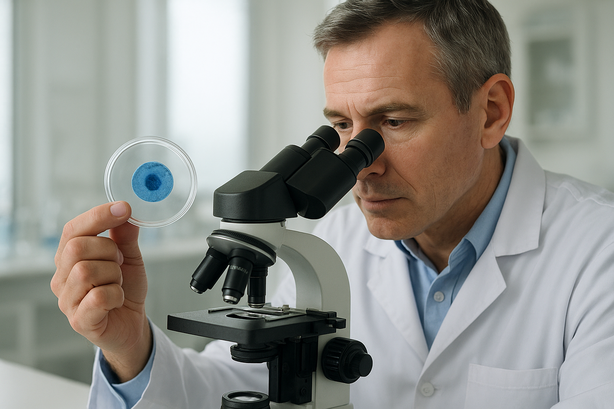How Stem Cell Therapy Heals Joints Naturally in Jacksonville, FL
Discover how regenerative stem cells help your joints heal naturally — without surgery or downtime
If joint pain is keeping you from living the life you love — whether it’s playing with your grandkids, gardening, returning to your favorite sport, or simply walking without wincing — there’s an encouraging alternative to long-term pain pills or invasive surgery. At our Jacksonville clinic, we offer advanced stem cell therapy that supports your body’s natural healing processes to reduce pain, restore movement, and improve your quality of life.
Understanding the problem: Why joint pain persists
Joint pain is a common and often progressive problem. Arthritis, wear-and-tear, prior injuries, and overuse can damage cartilage and other joint structures. When this happens, the joint environment becomes inflamed, cartilage thins or breaks down, and the smooth gliding motion of the joint is disrupted. Many conventional approaches — pain medications, corticosteroid injections, or even joint replacement surgery — aim to alleviate symptoms, but they don’t always address the underlying damage or promote tissue regeneration. Pain relievers can mask symptoms while degeneration continues, and surgery, while sometimes necessary, carries risk and recovery time that many people want to avoid.
Regenerative medicine: Treating the cause, not just the symptoms
Regenerative medicine represents a different approach. Instead of only masking pain, it supports repair and restoration of damaged tissues. One promising option is perinatal tissue–derived stem cell therapy, which we provide at our Jacksonville clinic. These stem cells and associated growth factors can help interrupt the cycle of inflammation and degeneration, encouraging healing that improves joint function over time.
What are perinatal tissue–derived stem cells?
Perinatal tissues — such as the placenta, amniotic membrane, and umbilical cord — are rich sources of cells and growth factors that support tissue development and repair. In our treatments, these cells are collected safely and ethically from scheduled C-section births, with full donor screening and consent. The tissues are processed under strict standards to preserve the healing components while ensuring safety and sterility.
Why perinatal-derived cells?
- Potent regenerative properties: These cells carry a high concentration of growth factors, cytokines, and extracellular matrix components that support tissue repair and modulate inflammation.
- Safety and ethical sourcing: Because tissues are obtained from scheduled C-sections with donor consent, the collection is noninvasive for the donor and avoids the ethical concerns some people have about other cell sources.
- Immunomodulatory effects: The cells and their secreted factors can help calm an overactive inflammatory response in damaged joints, creating a more favorable environment for healing.
How the therapy works in your joint
When the stem-cell medicine is put into a sore joint, it helps your body fix the joint in several helpful ways:
- Calms swelling and pain quickly: The medicine sends signals that tell the immune system to stop the “angry” response that causes swelling and pain. That makes the joint feel less painful and puffy soon after treatment.
- Gives repair signals and proteins: The treatment has lots of natural proteins that encourage the joint’s own cells to grow and make new cartilage — the smooth cushion that helps bones glide together.
- Wakes up tiny repair cells: There are small helper cells already in the joint. The medicine wakes them up so they multiply and start repairing damaged parts like cartilage and soft tissue.
- Helps blood flow and brings nutrients: It helps nearby blood vessels work better so more oxygen and food get to the injured area. That speeds healing and removes waste from the joint.
- Makes nerves send fewer “ouch” signals: Less inflammation means nerve endings aren’t as sensitive, so you feel less pain even before big repairs happen.
- Cleans up damaged tissue and builds new support: The therapy helps remove broken-down material and guides the body to lay down stronger, organized tissue so the joint works more smoothly.
- Works step-by-step over time: Many people notice less pain in a few weeks. Over months, the joint continues to heal and get stronger as new tissue forms and inflammation stays lower.
Doctors place the medicine carefully into the exact spot inside the joint so it can work best. Together, these steps help the joint become less painful and move more easily, so you can get back to the activities you enjoy.
When will I feel better?
While individual responses vary, many people begin to feel relief within a few weeks as inflammation subsides and tissue repair begins. For others, improvements continue over several months as the regenerative process progresses. Because regenerative therapy targets the source of degeneration rather than only masking symptoms, results can lead to longer-lasting functional improvements and a decreased reliance on pain medications.
Who can benefit?
Stem cell therapy can be an option for a wide range of joint problems, including:
- Knee pain from osteoarthritis or previous injuries
- Hip stiffness and degenerative changes
- Shoulder arthritis, rotator cuff injuries, and tendonitis
- Ankle and foot joint pain
- Certain sports injuries involving cartilage or soft tissue damage
It’s not a one-size-fits-all solution. Some patients may still require other treatments, including physical therapy or, in advanced cases, surgery. During your consultation, our team will evaluate whether regenerative therapy fits your condition and goals.
Advantages over traditional options
- Natural healing focus: Regenerative therapy helps the body repair and rebuild tissues instead of simply masking pain.
- Minimally invasive: Treatments are typically outpatient injections rather than surgical procedures.
- Reduced reliance on drugs: Many patients find they need fewer pain medications after successful regenerative therapy.
- Potential for longer-lasting improvement: By addressing underlying tissue damage, regenerative approaches may offer sustained benefits for mobility and pain.
Is it right for you?
If joint pain is limiting your independence or preventing you from doing the things you love, stem cell therapy may be a natural, effective option to consider. The best way to know is to schedule a consultation so we can assess your condition, review imaging if necessary, and create a personalized treatment plan aligned with your goals.
Take the next step toward better movement and less pain
You don’t have to accept chronic joint pain as a permanent part of your life. At our Jacksonville clinic, we’re committed to offering advanced regenerative options that help your body heal naturally — restoring movement and reducing pain so you can enjoy life again.
📞 Call today to schedule your consultation and discover how stem cell therapy in Jacksonville can help you move, feel, and live better — naturally.
You might also like


